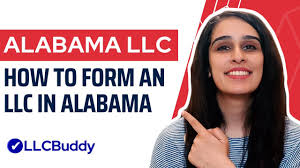In the world of business, appearance plays a crucial role in creating a lasting impression. Among the various dress codes that companies may adopt, “business formal” stands as one of the most polished and professional. This dress code, typically associated with high-level corporate environments, requires employees to dress in a manner that reflects professionalism, sophistication, and respect for the workplace.
What is Business Formal?
Business formal refers to a dress code that prioritizes conservative and sophisticated attire, typically worn in professional settings such as corporate offices, formal meetings, and important events. It is often seen in industries such as finance, law, banking, and other fields where maintaining a high standard of professionalism is key. This dress code aims to create an air of authority and competence while ensuring that employees represent themselves and their companies in the best possible light.
For both men and women, business formal attire is designed to convey a sense of seriousness and dedication, showing that the wearer respects the institution they represent. The clothing is usually tailored, neat, and understated, focusing on solid colors and classic designs.
Key Elements of Business Formal Attire for Men
For men, business formal attire generally consists of:
-
Suits: A well-tailored, dark-colored suit (navy, black, or charcoal) is a cornerstone of business formal wear. The suit should fit well without being too tight or too loose, ensuring a clean, sharp silhouette.
-
Shirts: A crisp, long-sleeved dress shirt in white or light blue is ideal. The shirt should be neatly pressed and free of wrinkles.
-
Ties: A tie is a must for business formal attire. The tie should be conservative in design, such as a solid color or a subtle pattern, and should complement the suit and shirt.
-
Shoes: Leather dress shoes, typically in black or dark brown, are appropriate for business formal settings. The shoes should be polished and in good condition.
-
Accessories: Accessories should be minimal and tasteful. A simple wristwatch, cufflinks, and a leather belt to match the shoes are typically all that’s needed. Avoid flashy or overly trendy accessories.
-
Grooming: Personal grooming is crucial. Hair should be neatly trimmed, facial hair should be well-kept, and overall hygiene should reflect a professional appearance.
Key Elements of Business Formal Attire for Women
For women, business formal attire offers slightly more variation while maintaining a professional tone. The essential components for women include:
-
Suits and Dresses: A tailored suit, either with a skirt or pants, is a common choice for business formal wear. Alternatively, women may wear a professional dress with a jacket or a well-tailored blouse and pencil skirt combination. The clothing should be modest, with the skirt length typically extending to the knee.
-
Blouses and Tops: Blouses should be conservative in nature—avoid low-cut or overly bright tops. Neutral or pastel-colored blouses often work best when paired with a suit.
-
Shoes: Closed-toe, conservative shoes such as pumps or flats are most appropriate. The heel should be moderate, not too high or too low. Neutral tones such as black, navy, or beige are preferred.
-
Accessories: Like their male counterparts, women should keep accessories to a minimum. Simple jewelry such as stud earrings or a delicate necklace is appropriate. A professional handbag or briefcase is also a common accessory.
-
Grooming: Personal grooming is just as important for women. Hair should be neatly styled, and makeup should be natural and understated. Nails should be clean and manicured, with neutral nail polish or none at all.
When to Wear Business Formal
Business formal attire is typically reserved for specific occasions. These may include:
-
Corporate Meetings: When meeting with clients, executives, or other business professionals, business formal ensures you look polished and serious about the engagement.
-
Interviews: For job interviews, especially in conservative fields like finance or law, business formal attire is expected to make a strong first impression.
-
Company Events: At formal corporate events, such as annual meetings, gala dinners, or conferences, business formal attire maintains the level of professionalism required for such occasions.
-
Client Visits: When meeting with clients or representing the company externally, dressing in business formal attire helps to project credibility and respect for the business relationship.
Business Formal vs. Business Casual
While business formal attire is often seen in more conservative industries, many workplaces have adopted business casual as a more relaxed alternative. The key difference between the two is the level of formality—business formal is a step above business casual and requires a more polished, structured appearance. Business casual, on the other hand, often allows for less rigid guidelines, such as dress shirts without a tie for men or dresses without a suit jacket for women.
Conclusion
Business formal is more than just a dress code—it’s a reflection of professionalism, respect, and competence. By following the guidelines of business formal attire, individuals convey that they take their role and responsibilities seriously. Whether it’s in a corporate office, during a client meeting, or at a formal event, dressing appropriately ensures that one’s appearance matches their professional goals and aspirations.




